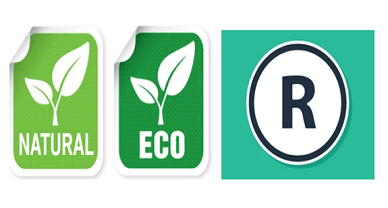Fashion And Environment: Navigating The Way To Sustainability
Introduction
The fashion industry plays the role of an important booster in the global economy, having a global economic impact of about 2.5 trillion US dollars and 75 million employees[1]. The industry has had phenomenal growth in recent years, with the manufacturing of apparel doubling between 2000 and 2014[2]. Despite purchasing 60% more clothing in 2014 than in 2000, people only wore the clothes for half as long. The drop in garment prices has led us to unnecessary hoarding of clothes. While this constant accumulation of clothes looks harmless from the outside, in reality it has seriously impacted our health, our society and our planet as a whole. According to United Nations Environment Program (UNEP), fashion has now become the second largest environment polluter after the oil industry[3]. Approximately 10% of all greenhouse gas emissions worldwide are attributed to the fashion business. In addition to contributing to 35% of the plastic microfibers released into the oceans and 20% of the industrial water pollution, the fashion industry has a negative impact on the environment in terms of CO2 emissions. With these figures constantly on the rise, it is clear that substantial steps need to be taken in order to mitigate the effects of environmental pollution caused by the fashion industry[4].
Environmental Impact Of The Fashion Industry
Fashion and climate have always been closely linked. As seasons change multiple times a year, so do fashion trends. As a result, there are two fashion weeks staged each year: one in September for the spring/summer collection and one in February for the autumn/winter show. However, this innate connection between fashion and climate has acquired a bad reputation. Fashion isn’t changing with the climate anymore, instead fashion is changing the climate. Fashion weeks negatively impact the environment in multiple ways. The travel, lodging, delivery of the collections, and intercity transit of the fashion models all contribute to the event’s carbon footprint. Additionally, the press activities during these events are a major cause too. Each year, only less than one percent of clothing is recycled to create new garments due to several challenges. Clothing fibers, which are polymers, undergo wear and tear during washing and wearing, making them too weak and short to be used for new fabrics. Furthermore, existing textile-to-textile recycling technologies struggle to separate dyes, contaminants, and fabric combinations. As a result, a staggering 53 million metric tons of discarded clothing end up in landfills or are incinerated annually[5]. Synthetic fabrics, taking up to 200 years to decompose, contribute to the production of methane, a potent greenhouse gas. In 2017, luxury brand Burberry even burned $37 million worth of unsold items[6].
[Image Sources : Getty image]
Social Issues
According to the Global Slavery Index, 45.8 million[7] people are victims of poor working conditions or even worse, forced labour and slavery in cotton producing nations, including China, India, Thailand, Indonesia, Vietnam, Bangladesh, and Pakistan. As part of contemporary slavery or forced and bonded work, they are subjected to hard labour without receiving regular payment. The horrific case of collapse of Rana Plaza building in Bangladesh where clothes for big brands like Primark were made, where about 2000 were killed and 2000 injured, is a classic example of how poor the conditions of workmen in these countries can be. Moreover, Organisations like “Stop Child Labour” have demonstrated that a significant number of children are employed in this sector, working long hours in hazardous conditions for extremely low pay. Known companies like Adidas, H&M, and Nike have been proven to engaging in similar activities.
Sustainable Fashion As An Alternative Approach
With the increasing impact of fast fashion on the environment, sustainable fashion is often regarded as the best alternative approach. Sustainable fashion is often viewed as opposite to fast fashion. The foundation of slow fashion is a philosophical ideal that emphasises sustainability principles like improving working conditions and minimising environmental damage. The production process is slowed down to a feasible timeframe, the self notion is abandoned, and the emphasis is placed on empowering workers by providing an option that permits change, all of which go against the fast fashion model. Sustainable fashion is more than just a passing trend; it takes into account the social, environmental, and economic “price” associated with the making of clothes. According to “Seven Forms of Sustainable Fashion” , each garment should be produced by combining the the aspects of custom preparation, high quality, through the way of environmental friendly manner, considering all ethical aspects, must be used for long and with good care, when the clothing is no longer required it must be passed down, or if the clothing is completely worn out, it should be returned to collection point for recycling and lastly, instead of buying new clothes, people should consider thrifting old clothes or borrowing or renting.
Trademark As An Effective Tool To Deliver Sustainable Fashion Goals
Trademarks not only help in identifying the source of goods or services, but also help in communicating brand values, goals and missions. In order to communicate sustainability goals, trademarks are very effective. For instance, the industry pioneer in sustainable materials, Patagonia, pushes customers to repair or buy used goods to cut down on consumption. Patagonia has trademarked phrases like WORN WEAR, BETTER THAN NEW, and WE’RE IN BUSINESS TO SAVE OUR HOME PLANET to express its dedication to the environment and to encourage consumers to adopt eco-friendly behaviour. A self-proclaimed “conscious clothing” business Another Tomorrow puts the wellbeing of people, animals, and the environment first. The business makes investments to spread awareness among the masses on sustainable fashion. Its website lists its policies including animal welfare, a living wage, chemicals, carbon offsets, and forest protection. Eileen Fisher, a company that uses regenerative production, sells new (or “first life”) clothing manufactured with eco-friendly materials, gently used (“second life”) clothing, and art and cushions made from damaged (“third life”) clothing under the trademarks like WASTE NO MORE, EILEEN FISHER RENEW, and CIRCULAR BY DESIGN. Many other similar leading brands have made the use of trademarks to convey their sustainable fashion goals.
Conclusion
Many scholars and organisations are of the opinion that the future looks green. That is, with more and more brands adopting sustainable fashion and with consumer awareness, sustainable fashion holds a promising future. For instance, consider shoes produced from recycled polyester that comes from factory waste. With the increasing acceptance of sustainable fashion, companies are coming up with creative, new ways to incorporate recycled waste into their products. 8–10% of yearly worldwide carbon emissions are attributable to the fashion industry. In fact, by the year 2030, it is predicted to increase by roughly a third. In light of this, the climate positivity movement calls on both manufacturers and consumers to consider how fashion may genuinely benefit the environment. The slow-fashion movement has received a lot of attention recently, and it is demonstrating to us how the fashion consumer experience might change over the next few decades, as well as how brands and retailers will develop and become more environmentally friendly. From climate positivity to cutting-edge biodegradable materials, the fashion industry is purposefully working towards a more sustainable future.
Meta description: This blog explores the critical issue of sustainability in the fashion industry and its profound impact on the environment and society. With a global economic impact exceeding 2.5 trillion US dollars, the fashion industry’s constant growth and consumption of clothing have led to alarming environmental degradation. It is now the second-largest polluter after the oil industry, contributing to approximately 10% of global greenhouse gas emissions, as well as plastic microfiber pollution and water contamination.
Moreover, the social implications of fast fashion are deeply concerning, with forced labor, slavery, and child exploitation prevalent in cotton-producing nations. The collapse of the Rana Plaza building in Bangladesh serves as a stark reminder of the dire working conditions faced by many in the industry.
In response to these challenges, sustainable fashion emerges as a viable solution. The principles of slow fashion, which prioritize sustainability and ethical practices, emphasize the importance of quality over quantity and the longevity of garments. By adopting sustainable practices, such as using eco-friendly materials, implementing recycling programs, and promoting conscious consumption, the fashion industry can mitigate its environmental and social impact.
Additionally, trademarks play a crucial role in communicating sustainability goals. Leading brands like Patagonia, Another Tomorrow, and Eileen Fisher utilize trademarks to express their commitment to the environment and encourage eco-friendly behavior among consumers.
Author: AREENA KAUSAR, in case of any queries please contact/write back to us at support@ipandlegalfilings.com or IP & Legal Filing.
[1] Environmental Sustainability in the Fashion Industry, Geneva Environment Network (June 25, 2023)
https://www.genevaenvironmentnetwork.org/resources/updates/sustainable-fashion/
[2] Id.
[3] Id.
[4] Id.
[5] Why Fashion Needs to Be More Sustainable, State of the Planet, Columbia Climate School (June 25, 2023)
https://news.climate.columbia.edu/2021/06/10/why-fashion-needs-to-be-more-sustainable/
[6] Id.
[7] Global Estimates of Modern Slavery, Indian Labour Organisation (June 22, 2023) https://www.ilo.org/wcmsp5/groups/public/@dgreports/@dcomm/documents/publication/wcms_575479.pdf



